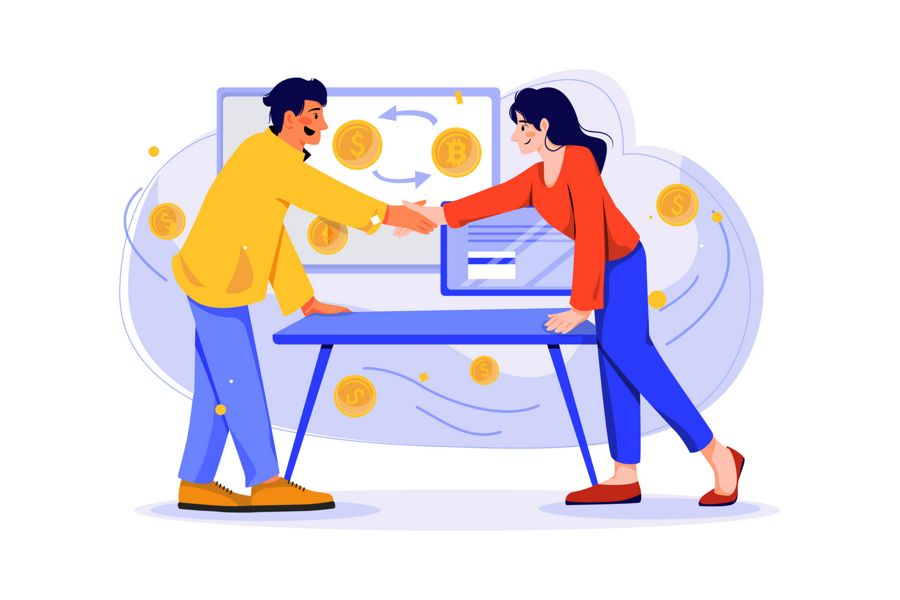Decentralized applications, commonly referred to as DApps, have emerged as one of the most promising use cases for blockchain technology. These applications leverage the decentralized nature of blockchain networks to provide users with a new paradigm of transparency, security, and user control. In this article, we will delve into the world of DApps, exploring their definition, characteristics, benefits, and real-world use cases. So, let’s dive in and discover the revolutionary potential of DApps!
Definition and Characteristics
Decentralized applications, or DApps, are software applications that operate on decentralized networks, typically blockchain platforms. Unlike traditional centralized applications, DApps are built using smart contracts, which are self-executing contracts with the terms of the agreement directly written into code. Some key characteristics of DApps include decentralization, transparency, security, and user control.
Benefits of DApps
DApps offer numerous benefits that make them an attractive alternative to traditional centralized applications. Enhanced security is a key advantage of DApps, as the decentralized nature reduces the risk of data breaches and unauthorized access. DApps also promote trust and transparency by providing immutable records of all transactions and activities, eliminating the need for intermediaries. Additionally, DApps can be cost-efficient, reducing fees and settlement times while empowering users with control over their digital assets and personal data.
Real-World Use Cases of DApps
DApps have the potential to disrupt various industries and revolutionize existing processes. One notable use case is decentralized finance (DeFi), which provides decentralized alternatives to traditional financial services such as lending, borrowing, and decentralized exchanges. DApps are also transforming supply chain management by enhancing transparency, traceability, and efficiency. Furthermore, the gaming industry has embraced DApps through the use of non-fungible tokens (NFTs), enabling ownership and trading of in-game assets. Finally, DApps can revolutionize identity management by offering self-sovereign identity solutions, granting users control over their digital identities.
Best Practices for DApp Development
Developing a successful DApp requires careful planning and adherence to best practices. Solidity is the most widely used programming language for developing smart contracts, and developers should prioritize secure coding practices to mitigate vulnerabilities. User experience (UX) design is crucial for DApps, ensuring a seamless and intuitive interface to encourage user adoption. Scalability and gas optimization are also important considerations, as DApps should be able to handle increasing demand and optimize transaction costs. Finally, community engagement plays a vital role in the success of a DApp, as developers should actively communicate with users, address their concerns, and gather feedback for continuous improvement.
Real-World Use Cases of DApps
DApps have the potential to disrupt various industries and revolutionize existing processes. Let’s explore some notable real-world examples of DApps:
- Uniswap: Uniswap is a decentralized exchange (DEX) built on the Ethereum blockchain. It allows users to trade ERC-20 tokens directly from their wallets, without the need for intermediaries or traditional order books.
- MakerDAO: MakerDAO is a decentralized lending platform that enables users to borrow and lend cryptocurrencies. It operates on the Ethereum network and uses smart contracts to facilitate secure and transparent transactions.
- CryptoKitties: CryptoKitties is a popular collectibles game built on the Ethereum blockchain. It allows users to breed, buy, and sell unique digital cats using non-fungible tokens (NFTs).
- Chainlink: Chainlink is a decentralized oracle network that connects smart contracts with real-world data and external APIs. It enables DApps to access off-chain information, enhancing their functionality and use cases.
- OpenSea: OpenSea is a decentralized marketplace for NFTs, enabling users to buy, sell, and trade digital assets. It provides a platform for artists, collectors, and creators to showcase and monetize their creations. With its user-friendly interface and blockchain-based security, OpenSea has become a prominent player in the growing NFT ecosystem.
Conclusion
Decentralized applications (DApps) represent a new era of software applications, leveraging the power of blockchain technology to provide enhanced security, transparency, and user control. With use cases spanning finance, supply chain, gaming, and more, DApps are reshaping industries and empowering individuals around the world. As DApp development continues to evolve, embracing best practices and exploring innovative solutions will pave the way for a decentralized future where users have greater control over their digital lives. Join the DApp revolution and be part of the decentralized movement today!
